As Israel’s offensive against Iran enters its second week, the world watches with bated breath as the conflict teeters on the edge of a dramatic escalation1. At the heart of this crisis lies Iran’s Fordow nuclear facility – a heavily fortified underground uranium enrichment site that has become the focus of intense international scrutiny and military planning2.
The potential strike on this facility represents a modern “crossing of the Rubicon” – a point of no return with far-reaching consequences that could reshape Middle Eastern geopolitics and global security architecture for decades to come3.
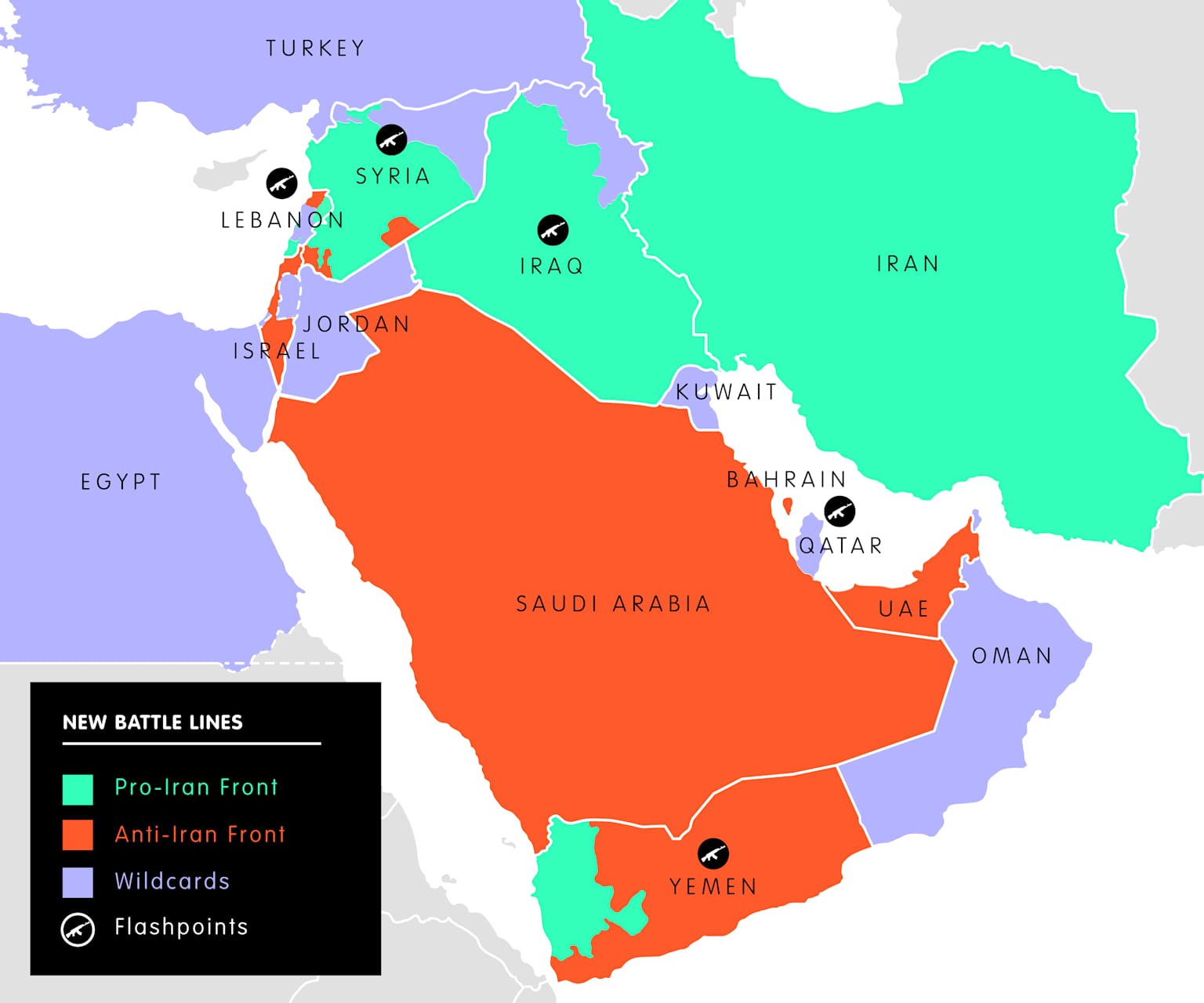
A geopolitical map of the Middle East illustrating “Pro-Iran” and “Anti-Iran” alliances and key flashpoints.
The Fortress Beneath the Mountain
Fordow Fuel Enrichment Plant, officially known as the Shahid Ali Mohammadi Nuclear Facility, is an Iranian underground uranium enrichment facility located approximately 30 kilometers north of the Iranian city of Qom4. Built within a mountain, the facility lies approximately 80-90 meters (260-295 feet) underground, making it impervious to conventional airstrikes5.
Construction on Fordow began around 2006, but Iran only disclosed its existence to the International Atomic Energy Agency (IAEA) in September 2009, after Western intelligence services had already identified the site4. This belated disclosure fueled international suspicions about Iran’s nuclear intentions46.
Unlike the Natanz facility, which Israel has already targeted, Fordow remains fully operational despite recent Israeli strikes6. The facility’s extreme fortification makes it a uniquely challenging target, with analysts suggesting it may be where Iran accelerates the transformation of enriched uranium reserves into a nuclear weapon5.
In early 2023, the IAEA reported finding uranium particles at Fordow enriched to almost 84% purity, perilously close to the 90% threshold required for weapons-grade material7. This discovery marked Fordow as the only Iranian facility where such high-level enrichment has been detected68.
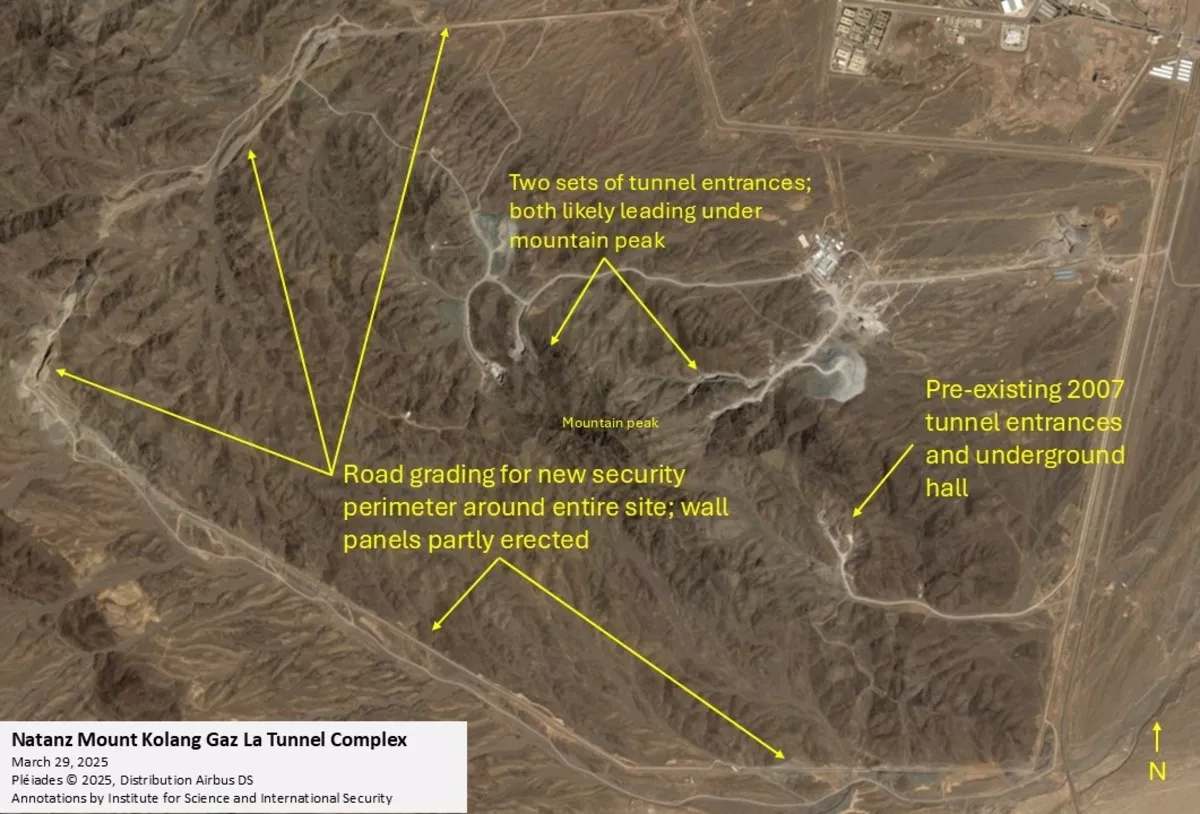
Satellite view of the Natanz Mount Kolang Gaz La Tunnel Complex in Iran, illustrating the extensive infrastructure and underground nature of Iranian nuclear facilities.
The Military Challenge: Penetrating the Impenetrable
Israel lacks the military capability to independently destroy Fordow due to its depth and hardening2. Only the United States possesses the specialized munitions required for such an operation – specifically the GBU-57 Massive Ordnance Penetrator (MOP), a 30,000-pound bunker-busting bomb designed to penetrate deeply fortified targets29.
These specialized weapons can only be delivered by America’s B-2 Spirit stealth bombers, which can carry two bombs each10. Military analysts suggest that multiple strikes would be required, with each bomb creating a pathway for subsequent bombs to penetrate deeper until reaching the enrichment facility1011.
The United States is reportedly preparing to support a potential strike on Fordow if Iran rejects conditions to resume nuclear negotiations9. President Trump has approved attack plans but is withholding a final decision, giving Iran a two-week window to consider diplomatic options912.
A strike on Fordow would mark the crossing of a significant military threshold – the first direct U.S. involvement in Israel’s campaign against Iran’s nuclear program13. Such an action would represent not just a tactical military operation but a strategic pivot with profound implications for the entire region314.

Rows of uranium enrichment centrifuges within a large industrial facility.
Immediate Consequences: The First 72 Hours
Should a strike on Fordow occur, the immediate aftermath would likely trigger a cascade of dangerous escalations1516. Iran would almost certainly launch retaliatory missile strikes against Israel, U.S. forces in the region, and potentially allied Gulf states1716.
Oil prices would spike dramatically, with analysts projecting Brent crude could jump 15-20% above pre-conflict levels if Iranian oil exports are disrupted18. In a severe scenario involving closure of the Strait of Hormuz, prices could potentially reach $120-130 per barrel18.
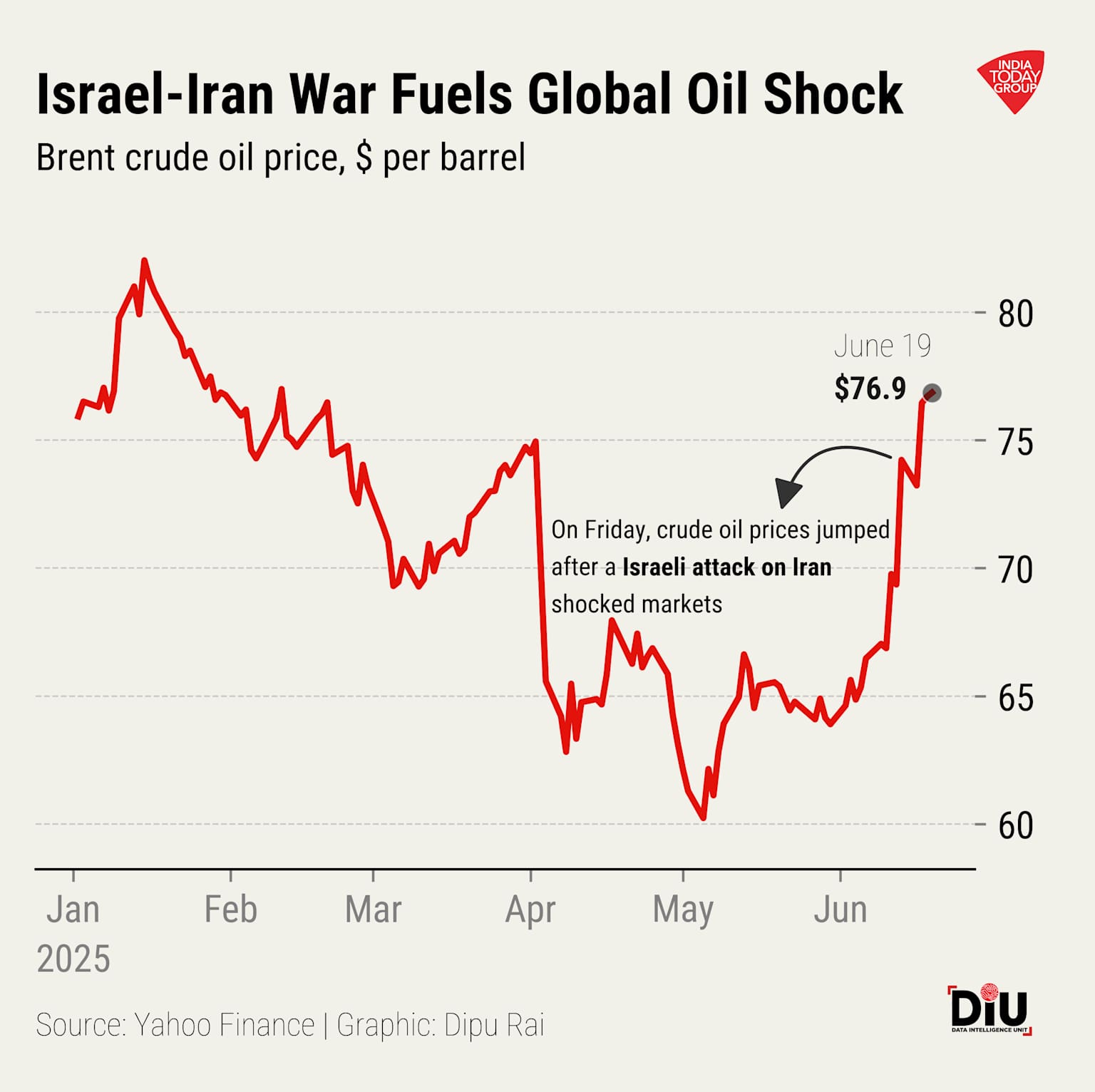
Brent crude oil prices surged sharply in mid-June 2025 following an Israeli attack on Iran, reflecting global market shock amid the Israel-Iran conflict.
Financial markets would experience significant volatility, with stock indices dropping sharply as investors flee to safe-haven assets like gold19. The Dow Jones Industrial Average dropped nearly 800 points following the initial exchange of strikes between Israel and Iran, illustrating the market’s sensitivity to escalation19.
Iranian proxies across the region – including groups in Iraq, Syria, Lebanon, and Yemen – would likely mobilize, opening multiple fronts against Israel and U.S. interests1620. This could potentially trigger a wider regional conflict involving multiple actors20.
Regional Security Architecture Under Strain
The Middle East’s complex web of alliances and rivalries would face unprecedented strain in the aftermath of a Fordow strike21. Regional powers would be forced to choose sides, potentially reshaping long-standing security relationships2120.
Saudi Arabia and other Gulf states, while privately perhaps relieved at Iran’s nuclear setback, would face difficult public positioning and potential domestic backlash45. Their oil infrastructure would become potential targets for Iranian retaliation1918.
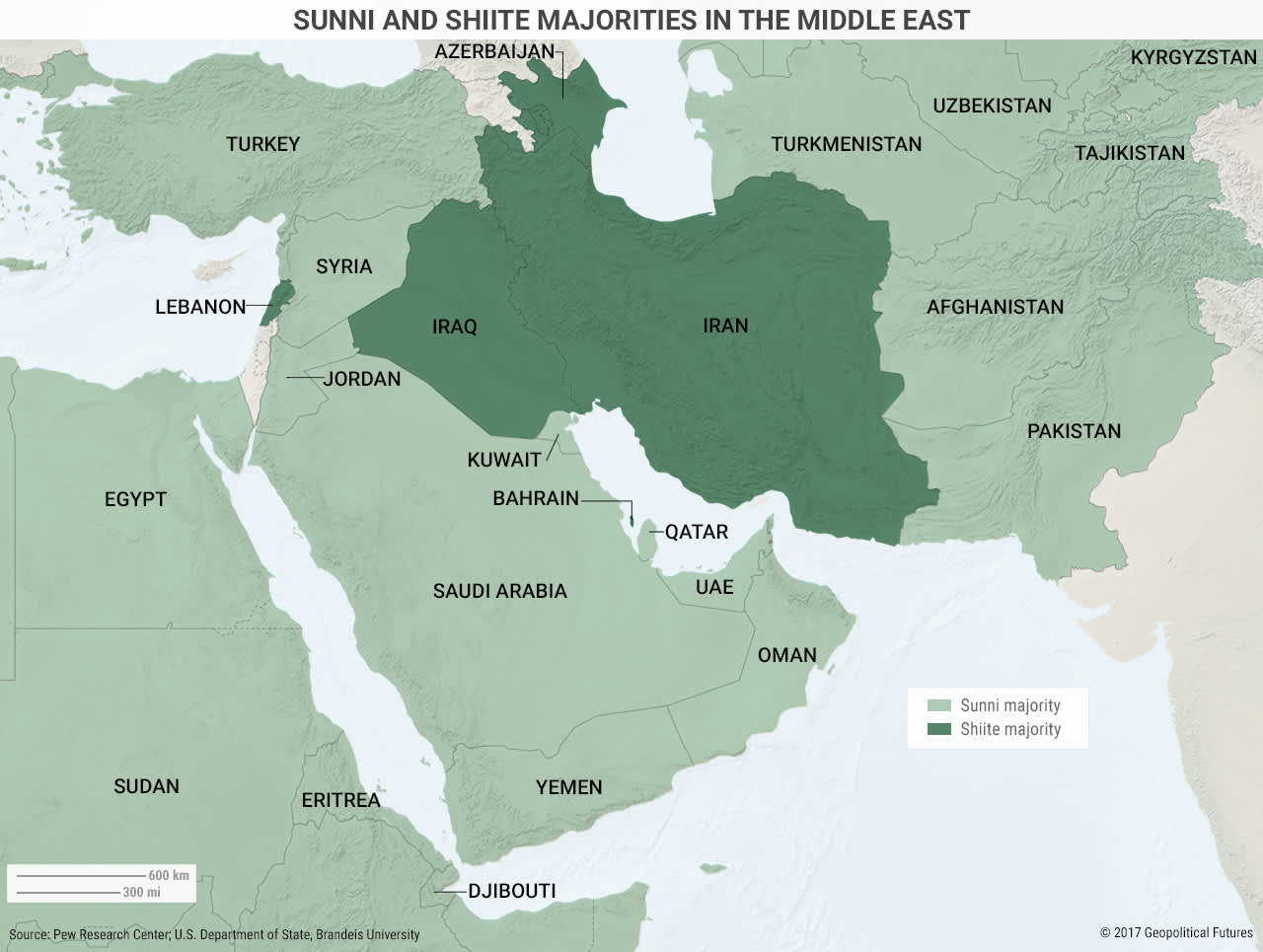
Map illustrating Sunni and Shiite majority populations across the Middle East, highlighting Iran’s Shiite majority within the regional religious landscape.
Turkey, caught between NATO obligations and regional interests, would face particular pressure as it balances relationships with both Iran and Western powers21. The country could potentially accelerate its own nuclear ambitions in response to perceived security threats.
Israel, while achieving its immediate military objective, would face an intensified security environment with heightened threats from multiple directions3. The initial tactical success could give way to strategic complications as the conflict widens314.
Jordan, Egypt, and other moderate Arab states would face domestic pressure to support the Palestinian cause and oppose U.S.-Israeli actions, potentially destabilizing governments that have maintained peace with Israel1521. This could unravel decades of painstaking diplomatic progress1620.

Map illustrating the “Axis of Resistance,” showing Iran and its supported groups and territories in the Middle East.
The Economic Shockwaves
Global energy markets would experience significant disruption following a strike on Fordow1918. Iran is OPEC’s third-largest producer, with an output of approximately 3.3 million barrels per day18. Any disruption to this supply would reverberate through global markets1918.
Historical precedent suggests severe economic consequences – previous Middle East conflicts have triggered double-digit percentage increases in oil prices1912. The current conflict has already driven the largest single-day oil price increase since Russia’s invasion of Ukraine in 202219.

Brent crude oil prices from March to October 2024, showing a significant jump due to escalating Middle East conflict.
Transportation and shipping costs would rise sharply if the Strait of Hormuz – through which approximately 20% of global oil supplies transit – faces security challenges or closure1822. Alternative routes would increase costs and delivery times for global trade1918.
Inflation pressures would mount globally as energy prices filter through to consumer goods and services19. Central banks might face the difficult choice between fighting inflation with higher interest rates or supporting economic growth amid geopolitical uncertainty193.
Iran’s economy, already under severe strain from sanctions, would face catastrophic pressures that could potentially destabilize the regime23. Previous sanctions caused Iran’s GDP to contract dramatically, and military action would compound these effects2321.
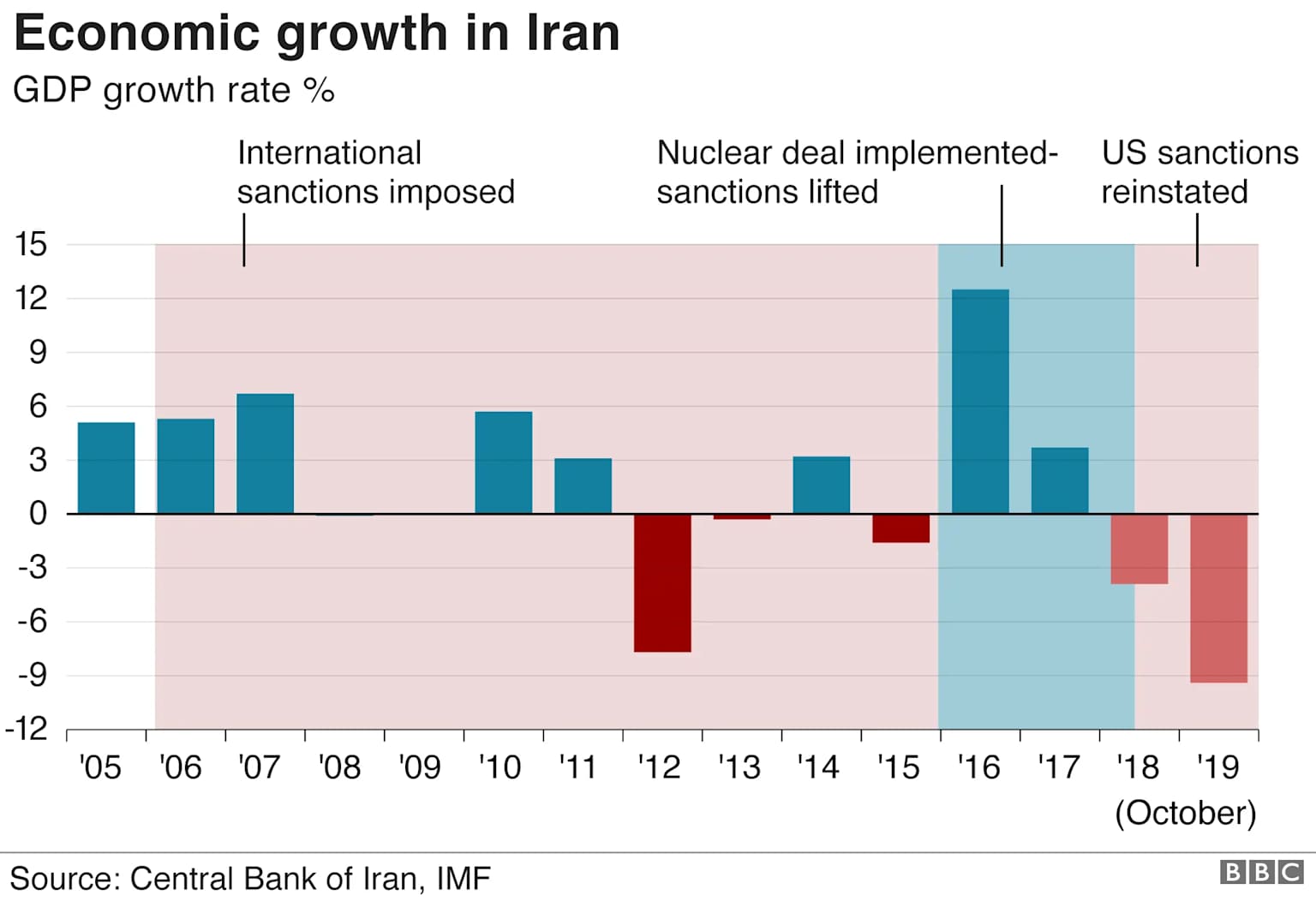
Iran’s GDP growth rate from 2005 to 2019, illustrating the economic impact of international sanctions and their subsequent lifting and reinstatement.
Nuclear Proliferation: The Paradoxical Effect
Perhaps most concerning is what experts call the “commitment trap” – the possibility that strikes intended to prevent Iran from developing nuclear weapons may actually accelerate its determination to acquire them24. Iranian President Masoud Pezeshkian has already vowed that destroyed facilities “would be rebuilt”24.
Saudi Arabia, Turkey, and Egypt have all previously indicated they would pursue their own nuclear capabilities if Iran appeared close to developing a nuclear weapon1521. A strike on Fordow, rather than eliminating the nuclear threat, could potentially multiply it across the region
.
The global non-proliferation regime, already under strain, could suffer irreparable damage if multiple Middle Eastern states simultaneously pursue nuclear weapons capabilities25. This would fundamentally alter global security calculations and potentially trigger a dangerous new arms race2625.
Israel’s assertion that Iran is “racing towards a nuclear bomb” directly contradicts U.S. intelligence assessments7. This discrepancy highlights the complexity of the situation and the high stakes involved in making decisions based on conflicting intelligence717.
The IAEA, the principal international body monitoring nuclear activities, has warned against military action targeting nuclear facilities due to potential radiation risks and the long-term damage to verification regimes276. The agency’s director general Rafael Grossi has emphasized that “nuclear facilities must never be attacked”27.
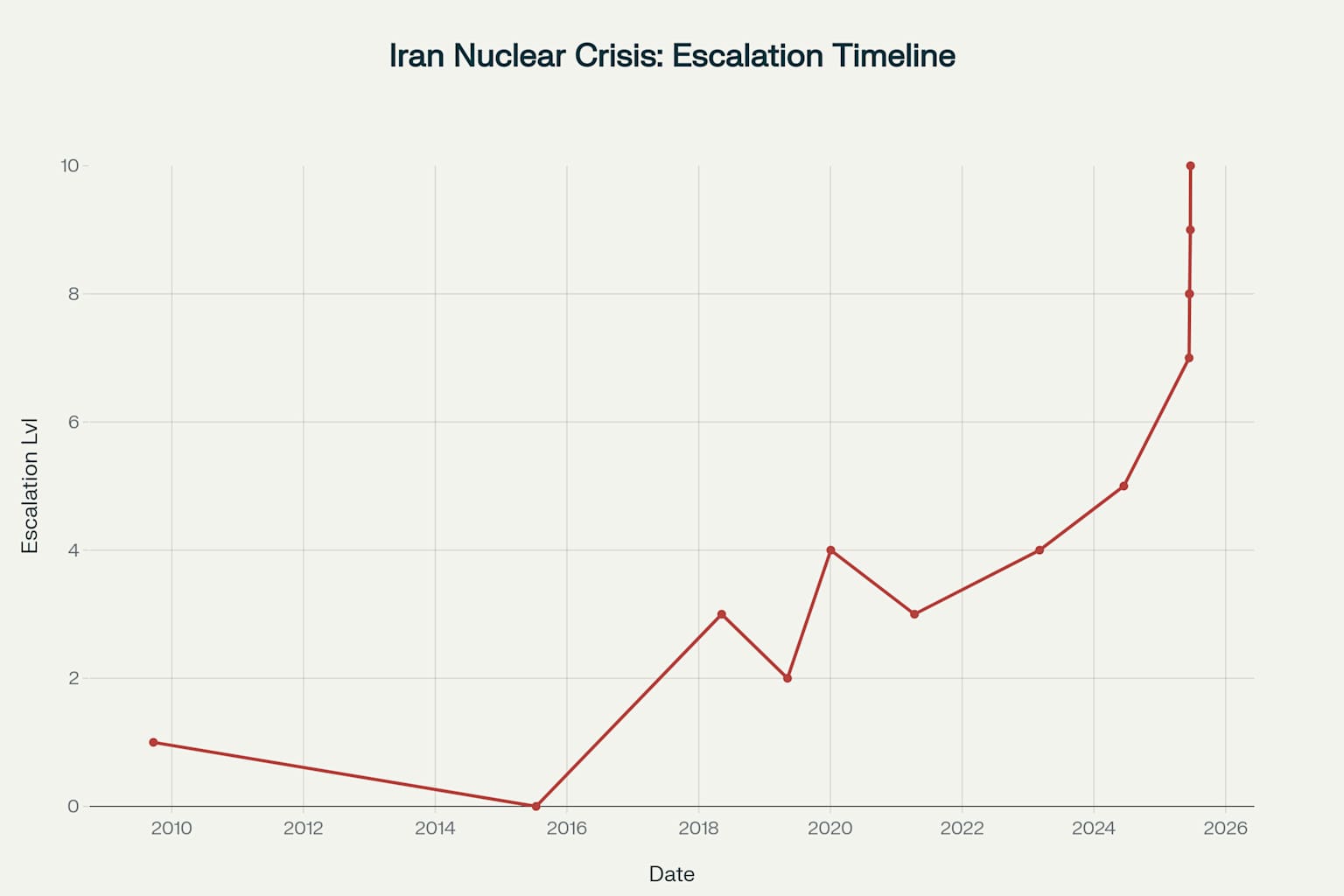
Timeline showing the escalation of the Iran nuclear crisis from 2009 to 2025, illustrating how tensions have reached critical levels
Diplomatic Fallout: A Fractured International Order
The international diplomatic response to a strike on Fordow would likely be sharply divided2716. Russia and China have already called for immediate de-escalation and would almost certainly condemn U.S. involvement, potentially using their UN Security Council vetoes to block resolutions favorable to U.S. or Israeli positions127.
European allies, while generally supportive of preventing Iranian nuclear proliferation, have expressed reservations about military solutions1. The EU’s foreign policy chief is attempting to chart a path back to diplomacy regarding Iran’s nuclear activities19.
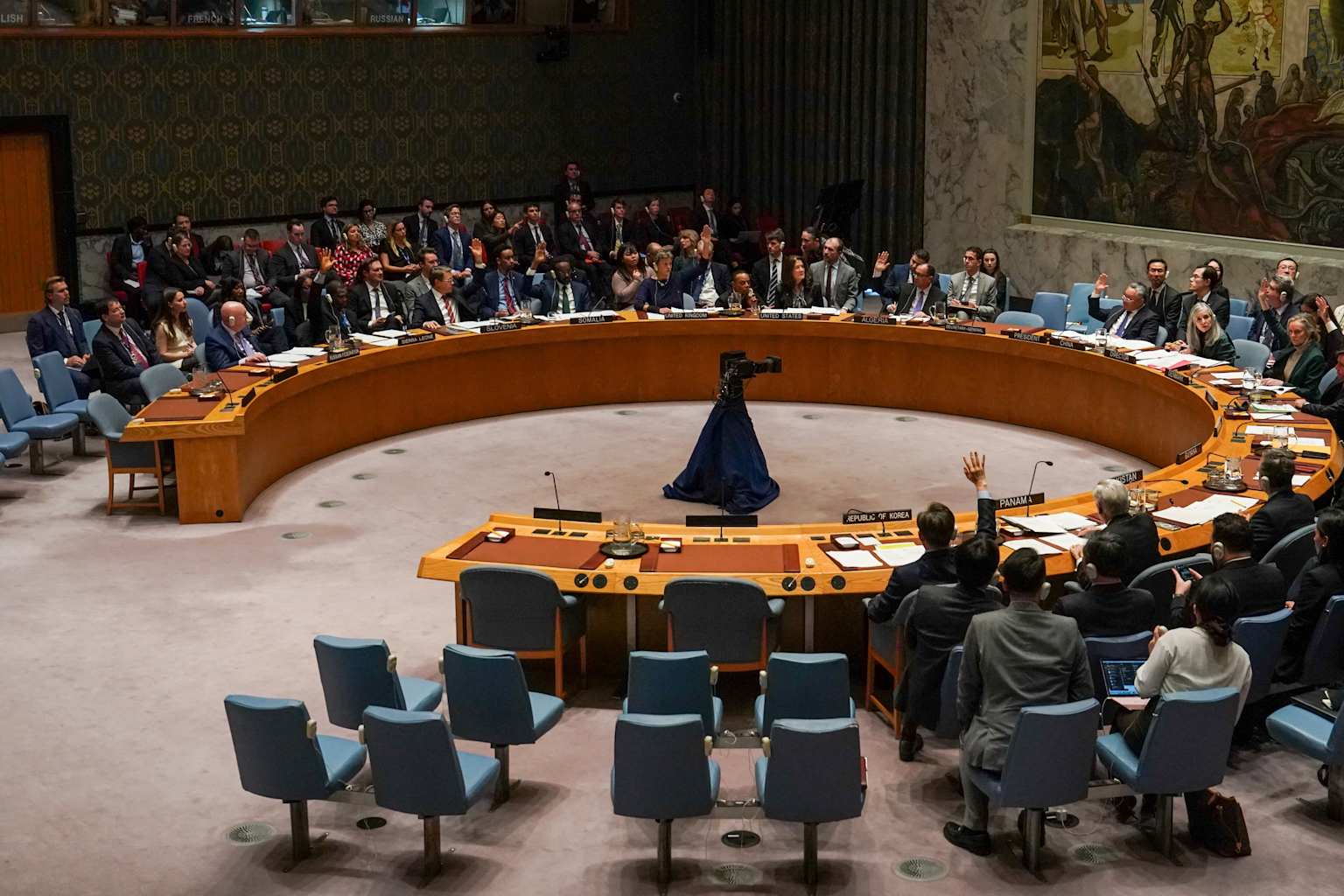
UN Security Council meeting with delegates voting around a circular table
The United Nations would face a serious test of its relevance and capability, with Secretary-General Antonio Guterres warning that the Iran-Israel conflict could become “a fire no one can control”1. The organization’s ability to mediate and de-escalate would be severely challenged in such a polarized environment127.
International law regarding preventive military strikes and attacks on nuclear facilities would enter murky territory, potentially weakening global norms against such actions16. This could create dangerous precedents for future conflicts involving nuclear aspirants1624.
Iran has signaled it will not engage in nuclear talks during the conflict, with Foreign Minister Abbas Araqchi stating negotiations with the U.S. would not occur “until Israeli aggression ceases”1. This stance complicates diplomatic efforts to resolve the crisis117.

UN Security Council meeting with Iranian representatives discussing diplomatic responses amid tensions over Fordow nuclear site.
Humanitarian Considerations: The Human Cost
The human toll of a widening conflict would be substantial, with civilian casualties likely on multiple fronts16. The historical precedent from previous regional conflicts suggests significant humanitarian consequences, including displacement, infrastructure damage, and loss of life1624.
Public health impacts could extend beyond immediate casualties, with potential disruptions to medical supplies, food security challenges, and long-term health effects from conflict-related environmental damage2628. War’s indirect effects often claim more lives than direct combat28.

Bar chart showing the decline in life expectancy at birth from 1978 to 1988, illustrating the human toll potentially linked to conflict or war impacts.
Refugee flows could increase dramatically, adding to the already significant displacement crises in the region16. Neighboring countries, many already hosting large refugee populations from previous conflicts, would face additional strains on their resources and social cohesion16.
Critical infrastructure, including water treatment facilities, power plants, and hospitals, could become collateral damage in an expanded conflict, with devastating consequences for civilian populations2816. The potential for targeting of dual-use facilities raises particular humanitarian concerns1624.
Economic hardships would disproportionately affect the most vulnerable populations, including those already living in poverty or displacement2616. Historical evidence from previous conflicts shows that economic sanctions and war combine to create severe humanitarian crises2316.
The American Calculus: Trump’s Dilemma
President Trump faces a pivotal decision that could define his presidency and America’s role in the Middle East for decades to come123. He has indicated he will make a determination on U.S. involvement within two weeks, balancing conflicting strategic, domestic, and international considerations129.
Public opinion presents a challenge for the administration, with a recent poll showing 60% of Americans oppose U.S. military involvement in the Israel-Iran conflict23. This opposition holds across party lines, with 65% of Democrats, 61% of independents, and 53% of Republicans against intervention23.
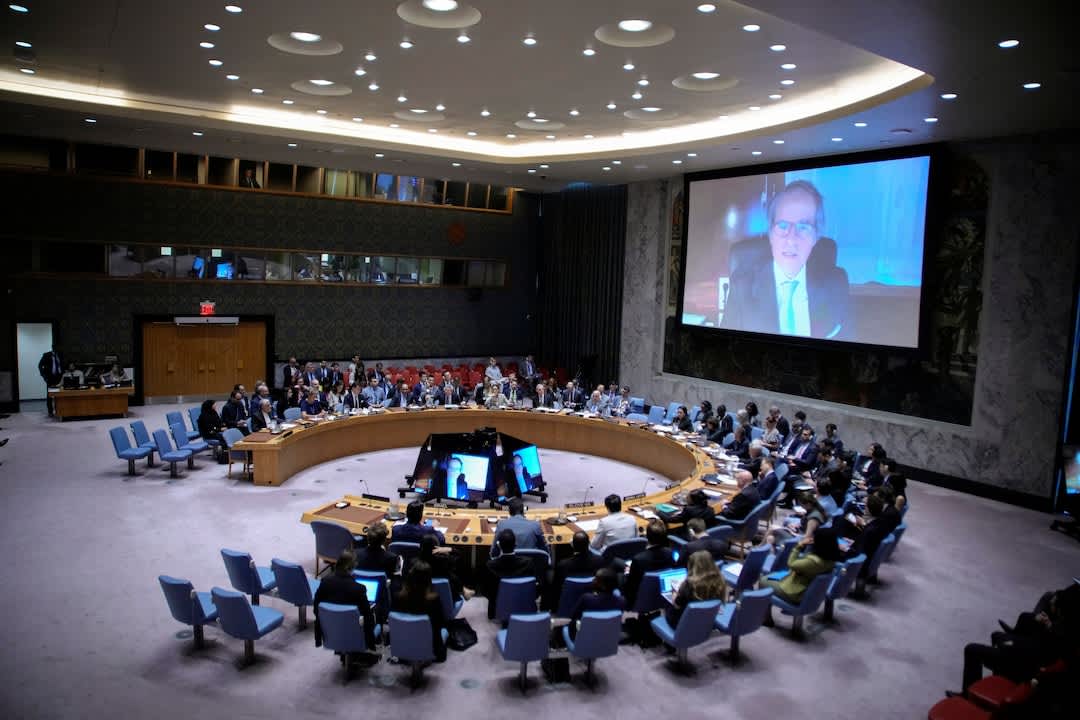
UN Security Council meeting discussing Iran and nuclear issues.
Trump has publicly contradicted his own intelligence agencies, asserting that Iran is building a nuclear weapon despite Director of National Intelligence Tulsi Gabbard’s testimony to Congress stating the opposite17. This unusual public disagreement highlights the complex information environment surrounding the decision177.
The administration must weigh short-term military objectives against long-term strategic interests, including the risk of entanglement in another Middle Eastern war while attempting to focus on competition with China153. Critics argue that a prolonged U.S. involvement would play into Beijing’s hands by diverting American resources and attention15.
Trump’s decision will also have significant implications for his domestic political standing, with his base divided between traditional hawks favoring assertive action and “America First” supporters skeptical of foreign entanglements323. This tension reflects broader debates within American foreign policy circles314.
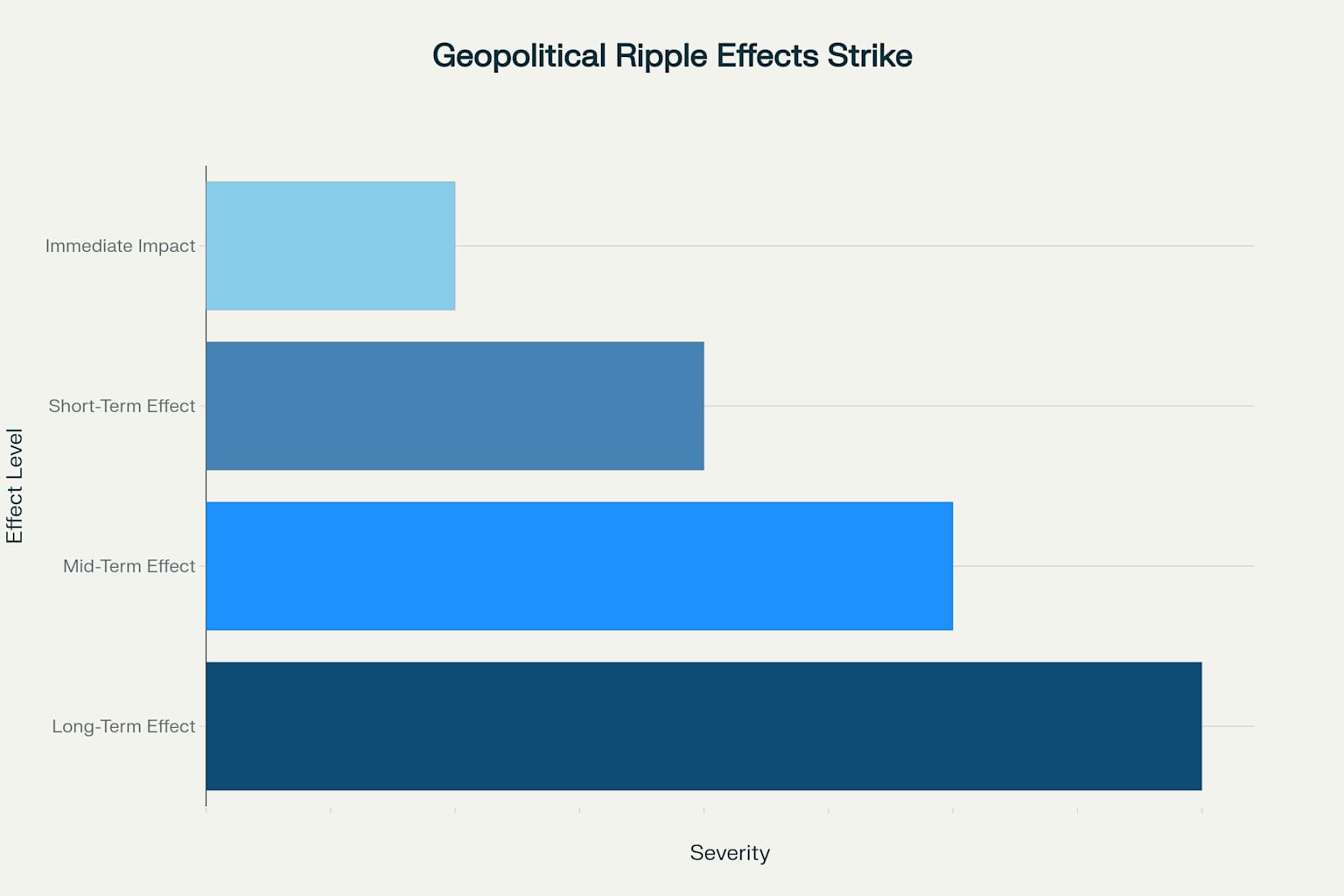
Timeline of cascading geopolitical consequences following a potential strike on Iran’s Fordow nuclear facility
Conclusion: At the Crossroads of History
The decision to strike Fordow represents a true “Rubicon moment” – a threshold crossing with momentous and potentially irreversible consequences324. Like Caesar’s famous river crossing, it would mark a point of no return with implications extending far beyond the immediate military action314.
The complex calculus involves weighing the risks of Iranian nuclear acquisition against the dangers of regional conflagration and global instability2124. There are no easy answers, only difficult tradeoffs with profound implications for global security321.
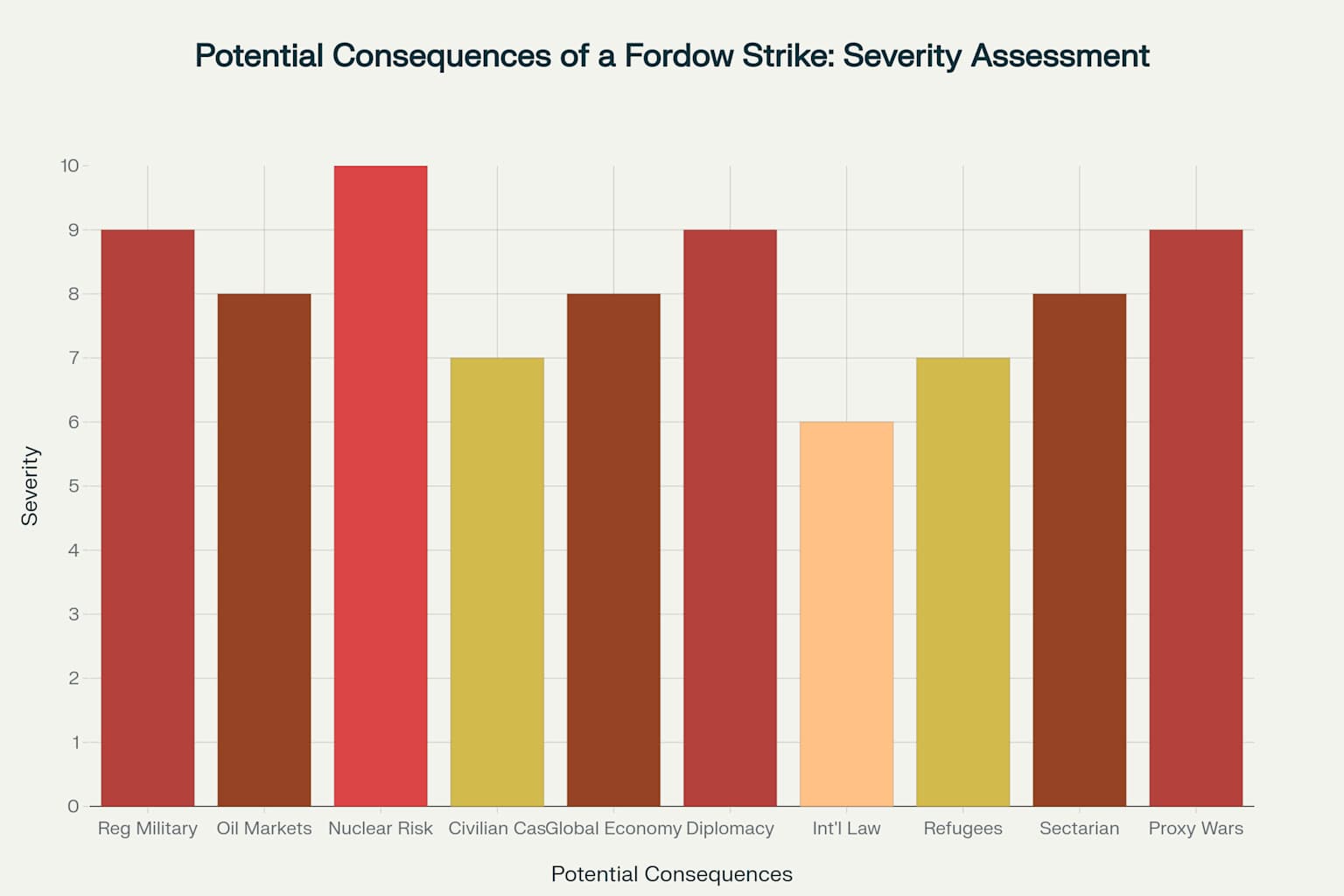
Severity assessment of potential consequences from a military strike on Iran’s Fordow nuclear facility
What seems clear is that the consequences of such a decision would extend far beyond the immediate military outcome. The geopolitical shock waves would reshape alliances, economies, and security paradigms across the Middle East and beyond1621.
The coming days may well determine whether diplomacy can prevail or whether the world will witness a new and dangerous chapter in Middle Eastern conflict19. The stakes could hardly be higher for regional stability, global security, and the international rules-based order321.
As decision-makers in Washington, Jerusalem, and Tehran contemplate their next moves, they face choices that will reverberate through history13. The Rubicon awaits, and with it, a future that hangs in precarious balance324.
Footnotes
-
https://www.reuters.com/world/middle-east/israel-iran-air-war-enters-second-week-europe-pushes-diplomacy-2025-06-20/ ↩ ↩2 ↩3 ↩4 ↩5 ↩6 ↩7 ↩8 ↩9 ↩10
-
https://www.csis.org/analysis/options-targeting-irans-fordow-nuclear-facility ↩ ↩2 ↩3
-
https://www.brookings.edu/articles/israel-strikes-iran-what-happens-next/ ↩ ↩2 ↩3 ↩4 ↩5 ↩6 ↩7 ↩8 ↩9 ↩10 ↩11 ↩12 ↩13 ↩14 ↩15
-
https://en.wikipedia.org/wiki/Fordow_Fuel_Enrichment_Plant ↩ ↩2 ↩3 ↩4
-
https://www.cnn.com/2025/06/17/middleeast/iran-fordow-nuclear-site-latam-hnk-intl ↩ ↩2 ↩3
-
https://www.aljazeera.com/news/2025/6/19/what-is-irans-fordow-nuclear-facility-and-could-us-weapons-destroy-it ↩ ↩2 ↩3 ↩4
-
https://www.cbsnews.com/news/israel-iran-war-fordo-nuclear-site/ ↩ ↩2 ↩3 ↩4
-
https://news.sky.com/story/fordow-what-we-know-about-irans-secretive-nuclear-mountain-and-how-israel-might-try-to-destroy-it-13385834 ↩
-
https://www.understandingwar.org/backgrounder/iran-update-special-report-june-19-2025-evening-edition ↩ ↩2 ↩3 ↩4 ↩5 ↩6
-
https://www.aljazeera.com/news/2025/6/19/why-israel-wants-us-bunker-busters-to-hit-irans-fordow-nuclear-site ↩ ↩2
-
https://www.usatoday.com/story/graphics/2025/06/18/how-does-a-bunker-buster-bomb-work-b2-spirit-stealth-bomber-gbu-57-fordow-nuclear-site/84257217007/ ↩
-
https://www.reuters.com/world/middle-east/trump-decide-us-action-israel-iran-conflict-within-two-weeks-white-house-says-2025-06-19/ ↩ ↩2 ↩3 ↩4
-
https://www.cbsnews.com/news/iran-israel-war-us-trump-nuclear-sites-risk-all-out-war/ ↩
-
https://www.atlanticcouncil.org/blogs/new-atlanticist/trump-iran-israel-bomb-fordow-war/ ↩ ↩2 ↩3 ↩4
-
https://www.foxnews.com/opinion/americas-iran-dilemma-how-strike-fordow-without-losing-sight-china-threat ↩ ↩2 ↩3 ↩4 ↩5
-
https://www.aljazeera.com/news/2025/6/19/escalate-deescalate-what-options-iran-end-israel-war ↩ ↩2 ↩3 ↩4 ↩5 ↩6 ↩7 ↩8 ↩9 ↩10 ↩11 ↩12 ↩13 ↩14 ↩15 ↩16
-
https://www.aljazeera.com/news/2025/6/20/trump-says-us-intelligence-wrong-about-iran-not-building-nuclear-bomb ↩ ↩2 ↩3 ↩4 ↩5
-
https://www.reuters.com/business/energy/citi-sees-oil-prices-75-78bbl-if-war-disrupts-11-mln-bpd-irans-oil-exports-2025-06-19/ ↩ ↩2 ↩3 ↩4 ↩5 ↩6 ↩7 ↩8
-
https://www.cnn.com/2025/06/13/business/oil-prices-markets-israel-iran-attack-intl-hnk ↩ ↩2 ↩3 ↩4 ↩5 ↩6 ↩7 ↩8 ↩9 ↩10
-
https://www.rand.org/pubs/commentary/2025/06/the-israel-iran-conflict-qa-with-rand-experts.html ↩ ↩2 ↩3 ↩4 ↩5 ↩6 ↩7 ↩8 ↩9 ↩10
-
https://www.nytimes.com/2025/06/17/world/middleeast/iran-nuclear-plant-natanz-damage.html ↩
-
https://www.axios.com/2025/06/19/israel-iran-war-americans-poll ↩ ↩2 ↩3 ↩4 ↩5 ↩6
-
https://theconversation.com/iran-israel-threshold-war-has-rewritten-nuclear-escalation-rules-258965 ↩ ↩2 ↩3 ↩4 ↩5 ↩6 ↩7 ↩8
-
https://www.icrc.org/en/document/humanitarian-impacts-and-risks-use-nuclear-weapons ↩ ↩2
-
https://www.aljazeera.com/news/2025/6/13/how-the-world-is-reacting-to-israel-attacks-on-iran-nuclear-military-sites ↩ ↩2 ↩3 ↩4 ↩5
-
https://thereader.mitpress.mit.edu/devastating-effects-of-nuclear-weapons-war/ ↩ ↩2 ↩3